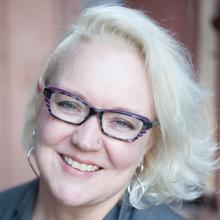Staff and Provider Preparation/Training: Patty Nason, MBA
Prior to COVID-19, most clinics had some experience with video visits, with ~2% ambulatory visits by video. During the first few weeks of the public health emergency, we onboarded over 1,000 faculty and staff, through a combination of live trainings over Zoom, recorded trainings, tipsheets, and support from clinic leadership, growing video visit volumes to over 50%. We also partnered with APeX analysts to streamline the scheduling process, using SER to automatically populate meeting IDs into the patient’s MyChart.
Physician and Patient Experience: Therese Chan Tack, DO
For many physicians and departments, COVID-19 and SIP created opportunities to reimagine care delivery. There has been a need to understand and adapt clinical workflows based on different types of patient interactions e.g. MD-patient, faculty-trainee, and multi-disciplinary specialty. We developed workflows where all participants including patients, attending MDs, trainees, interpreters and scribes were fully remote. For more complex scenarios, we used features like Zoom breakout rooms and both Zoom chat and Voalte messaging features to streamline communication with staff. On the patient-experience side, we localized our patient-facing website and brochures in the top 10 languages. We include video visit appointment instructions in MyChart which auto-translate to the patient's preferred language.
Provider Documentation and Reimbursement: Carol Yarbrough, MBA
Historically, physician video E/M levels remained consistent with in-person E/M levels. For practitioners new to the video visit, emphasis on time or medical complexity is key. In addition, the Medicare/Medicaid reimbursement structure (split fee: pro fee/tech fee) versus commercial payers which reimburse a clinic visit with one payment is relevant to overall clinic health. Understanding your payer mix will help to guide overall financial health as care resumption activities in the clinic in addition to video modality continuation.




